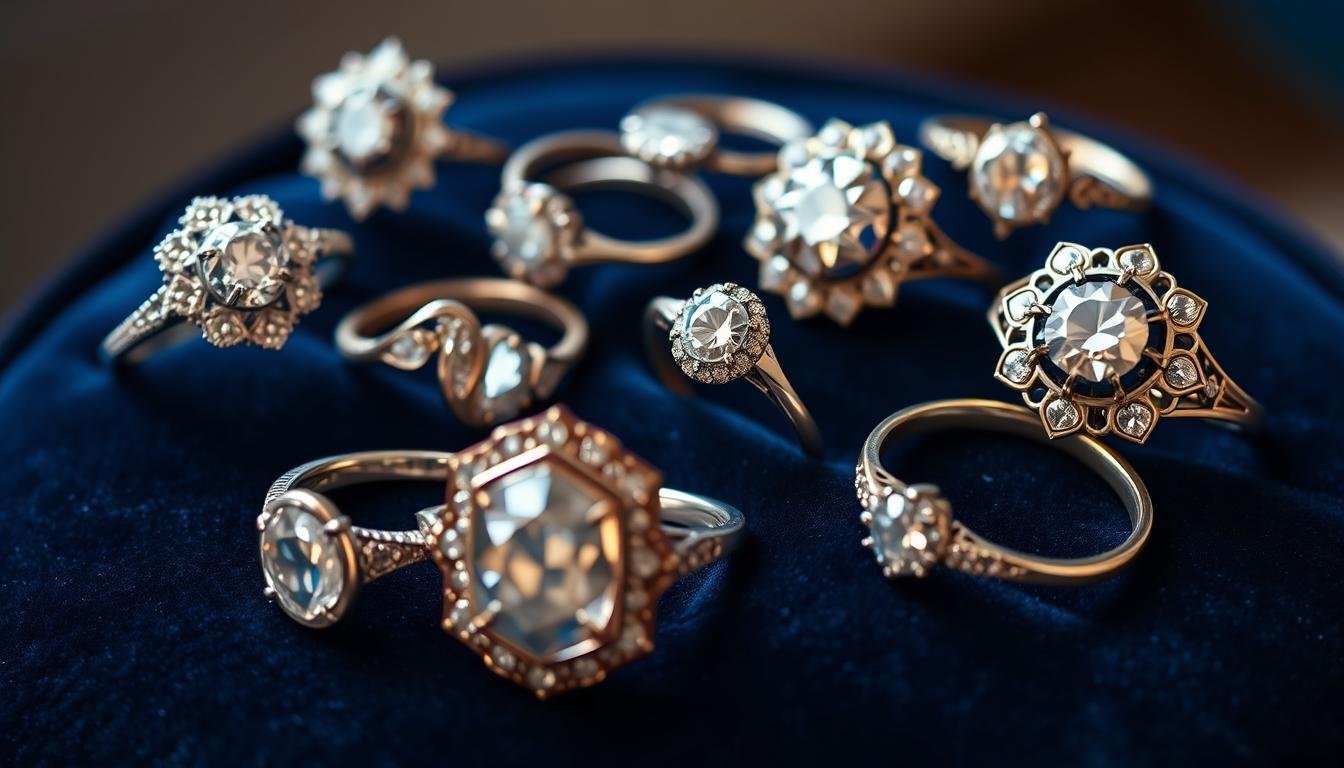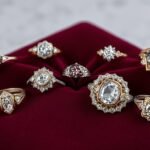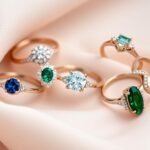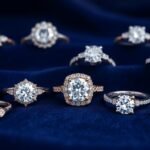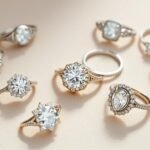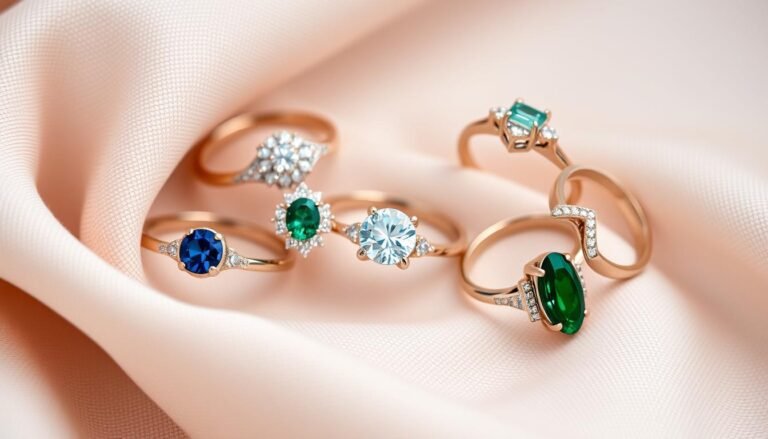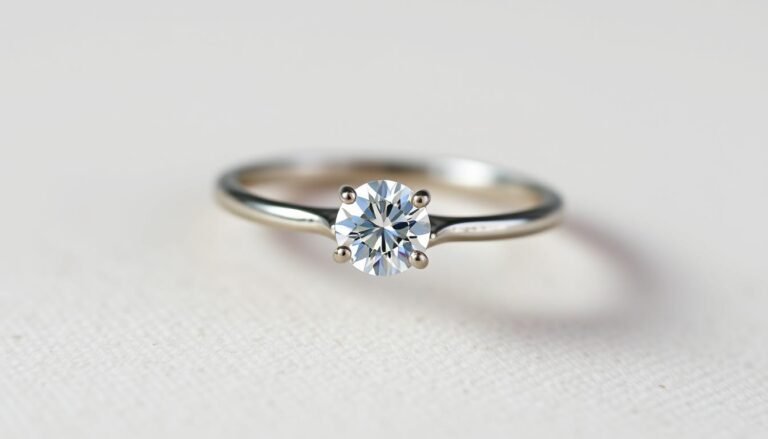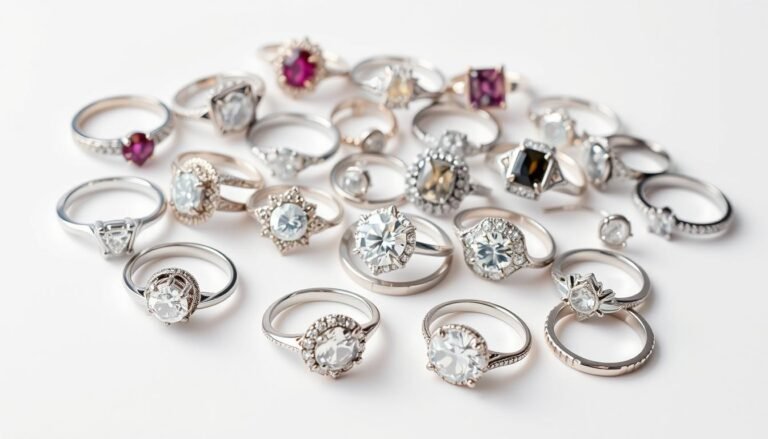Vintage Engagement Rings: Timeless Symbols of Love and History
There’s something undeniably magical about vintage engagement rings. Each one tells a story, carries history in its setting, and offers a unique character that modern mass-produced rings simply cannot match. Whether you’re drawn to the romantic flourishes of the Victorian era, the nature-inspired motifs of Art Nouveau, or the bold geometric patterns of Art Deco, vintage rings offer a timeless appeal that transcends fleeting trends.
This Website contains affiliate links. That means I may earn a small commission if you purchase through my links, at no extra cost to you.
In this comprehensive guide, we’ll explore the enchanting world of vintage engagement rings, from their distinctive era characteristics to practical advice on finding an authentic piece that will be cherished for generations to come.
What Makes an Engagement Ring “Vintage”?
Before diving into specific eras, it’s important to understand what qualifies a ring as “vintage.” Generally, vintage engagement rings are at least 50 years old, dating from the 1920s to the 1970s. Rings over 100 years old are classified as “antique.” However, many jewelers and collectors use these terms somewhat interchangeably.
True vintage rings were crafted during their respective time periods and feature authentic period craftsmanship, materials, and design elements. This distinguishes them from modern “vintage-inspired” or “vintage-style” rings, which mimic historical aesthetics but are created using contemporary techniques.
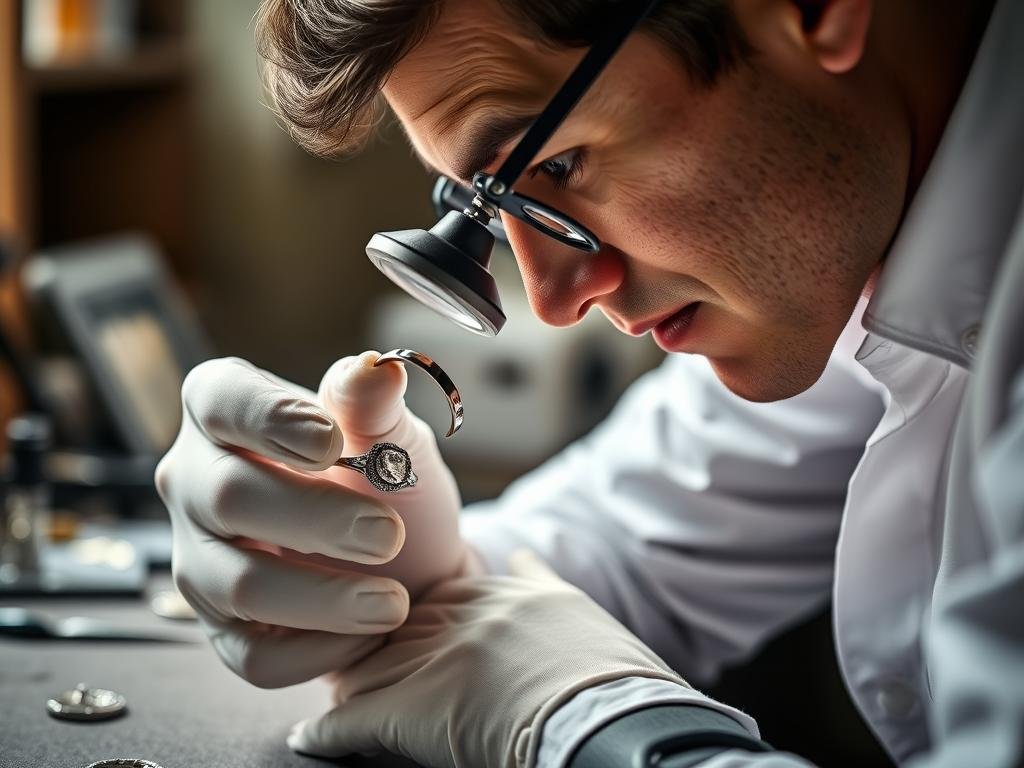
“What makes vintage rings special isn’t just their age, but the irreplaceable craftsmanship and historical significance they carry. Each represents techniques and artistic expressions of its era that simply cannot be replicated today.”
Exploring Vintage Engagement Ring Eras
Each historical period produced engagement rings with distinctive characteristics, reflecting the artistic movements, cultural values, and technological capabilities of the time. Let’s explore the most significant eras for vintage engagement rings.
Victorian Era (1837-1901)
The Victorian era, named for Queen Victoria’s reign, is divided into three periods: Early (Romantic), Mid (Grand), and Late (Aesthetic). Victorian engagement rings often feature intricate details, symbolic motifs, and romantic designs.

Key Characteristics:
- Yellow or rose gold settings
- Rose-cut and old mine-cut diamonds
- Romantic motifs like hearts, flowers, and birds
- Cluster and halo designs
- Use of colored gemstones, especially rubies and sapphires
- Ornate engraving and filigree work
Find Your Victorian Treasure
Explore authentic and inspired Victorian engagement rings with their romantic details and timeless appeal.
Edwardian Era (1901-1915)
The Edwardian period, though brief, produced some of the most delicate and refined engagement rings in history. This era coincided with the “Belle Époque” in France and emphasized elegance and femininity.

Key Characteristics:
- Platinum settings (first widespread use)
- Intricate filigree and openwork designs
- Milgrain detailing (tiny beads of metal)
- Old European-cut and rose-cut diamonds
- Lacy, delicate appearance
- Floral and garland motifs
- Use of pearls and diamond accents
Discover Edwardian Elegance
Experience the delicate beauty and refined craftsmanship of Edwardian-era engagement rings.
Art Nouveau (1890-1910)
Overlapping with late Victorian and early Edwardian periods, Art Nouveau brought a distinctive artistic style to engagement rings, emphasizing flowing lines and nature-inspired designs.
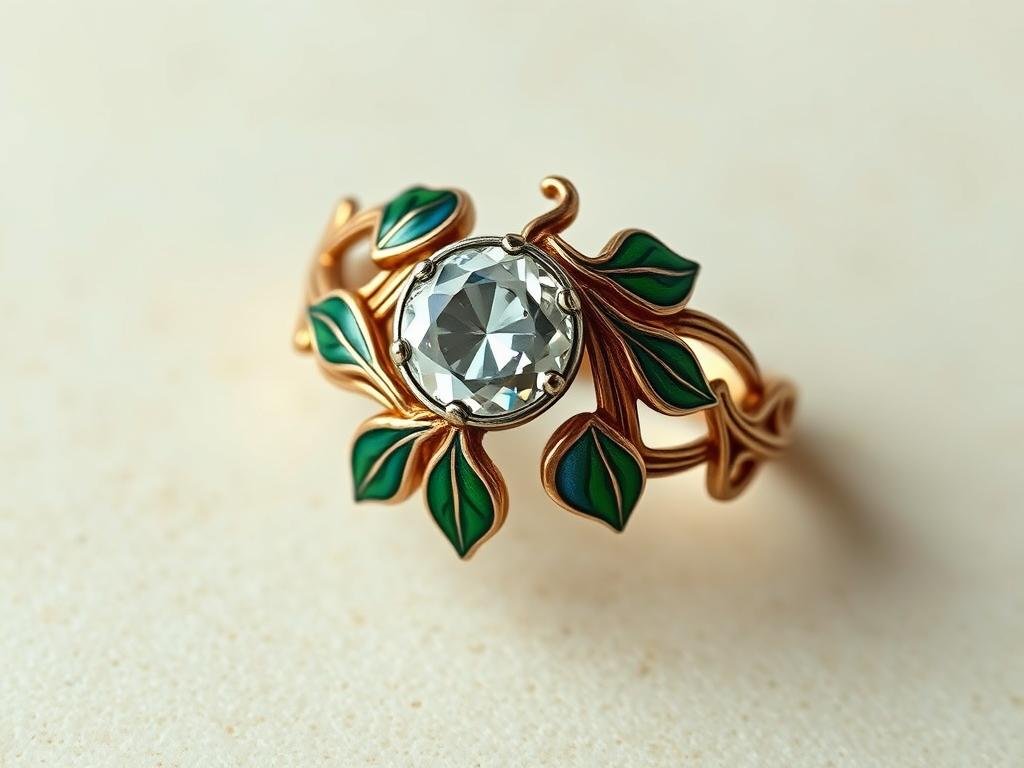
Key Characteristics:
- Flowing, asymmetrical designs
- Nature-inspired motifs (flowers, insects, vines)
- Use of colored gemstones
- Incorporation of enamel work
- Whimsical, artistic appearance
- Often featured female figures or faces
Find Art Nouveau Beauty
Discover the artistic and nature-inspired designs of Art Nouveau engagement rings.
Art Deco Era (1920-1935)
Perhaps the most recognizable and sought-after vintage engagement ring style, Art Deco pieces reflect the bold, geometric aesthetic of the Roaring Twenties and early Depression era.
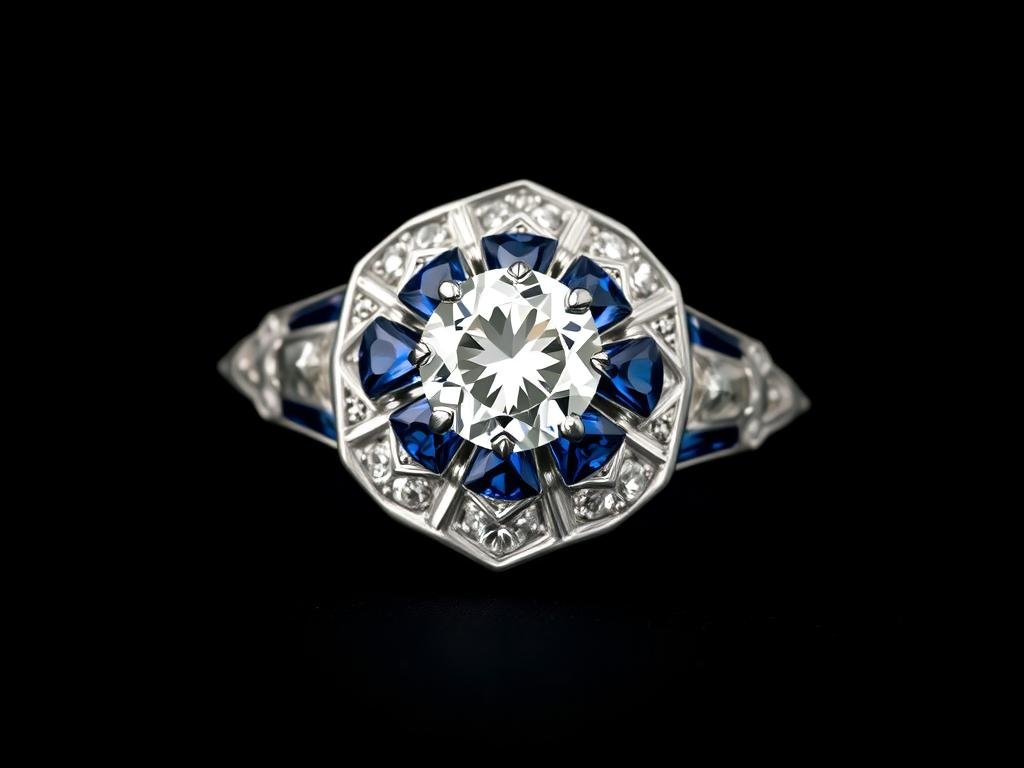
Key Characteristics:
- Bold geometric patterns and symmetry
- Platinum settings
- Step-cut diamonds (emerald and Asscher cuts)
- Contrasting colored gemstones (sapphires, emeralds, onyx)
- Calibré-cut accent stones
- Strong architectural influence
- Use of negative space in designs
Explore Art Deco Glamour
Find the perfect Art Deco engagement ring with bold geometric designs and timeless sophistication.
Retro Era (1935-1950)
The Retro period, influenced by World War II, saw a shift toward bolder, more substantial designs that reflected the industrial and patriotic spirit of the time.

Key Characteristics:
- Rose and yellow gold settings (platinum was restricted during wartime)
- Bold, three-dimensional designs
- Larger scale and substantial appearance
- Patriotic motifs and ribbon designs
- Use of synthetic rubies and sapphires
- Industrial influence in design
Discover Retro Bold Beauty
Explore the substantial, bold designs of Retro era engagement rings with their distinctive character.
Mid-Century (1950-1970)
The Mid-Century period brought a blend of traditional and modern elements to engagement ring design, with a focus on showcasing larger center diamonds in elegant settings.

Key Characteristics:
- Emphasis on larger center diamonds
- Introduction of brilliant-cut diamonds
- Clean, elegant lines
- White gold and platinum settings
- Tapered baguette side stones
- Balance of traditional and modern elements
- Solitaire and three-stone designs
Find Mid-Century Elegance
Discover the refined beauty and timeless appeal of Mid-Century vintage engagement rings.
Unique Features of Vintage Engagement Rings
What makes vintage engagement rings so special goes beyond their age. These pieces offer distinctive characteristics that set them apart from modern rings.

Distinctive Craftsmanship
Vintage rings showcase craftsmanship techniques that are rarely used today. Hand-engraving, filigree (delicate metalwork), and milgrain (tiny beaded details along edges) required skilled artisans and considerable time to create. Many of these techniques have become lost arts, making vintage pieces irreplaceable.
Unique Diamond Cuts
Before modern cutting technology, diamonds were cut by hand, resulting in distinctive shapes that catch and reflect light differently than modern cuts. These include:
Old Mine Cut

Precursor to the cushion cut with a high crown, small table, and large facets. Popular in Victorian and Edwardian eras.
Old European Cut

Predecessor to the modern round brilliant cut, featuring a circular shape with a high crown and small table. Common in Edwardian and Art Deco periods.
Rose Cut
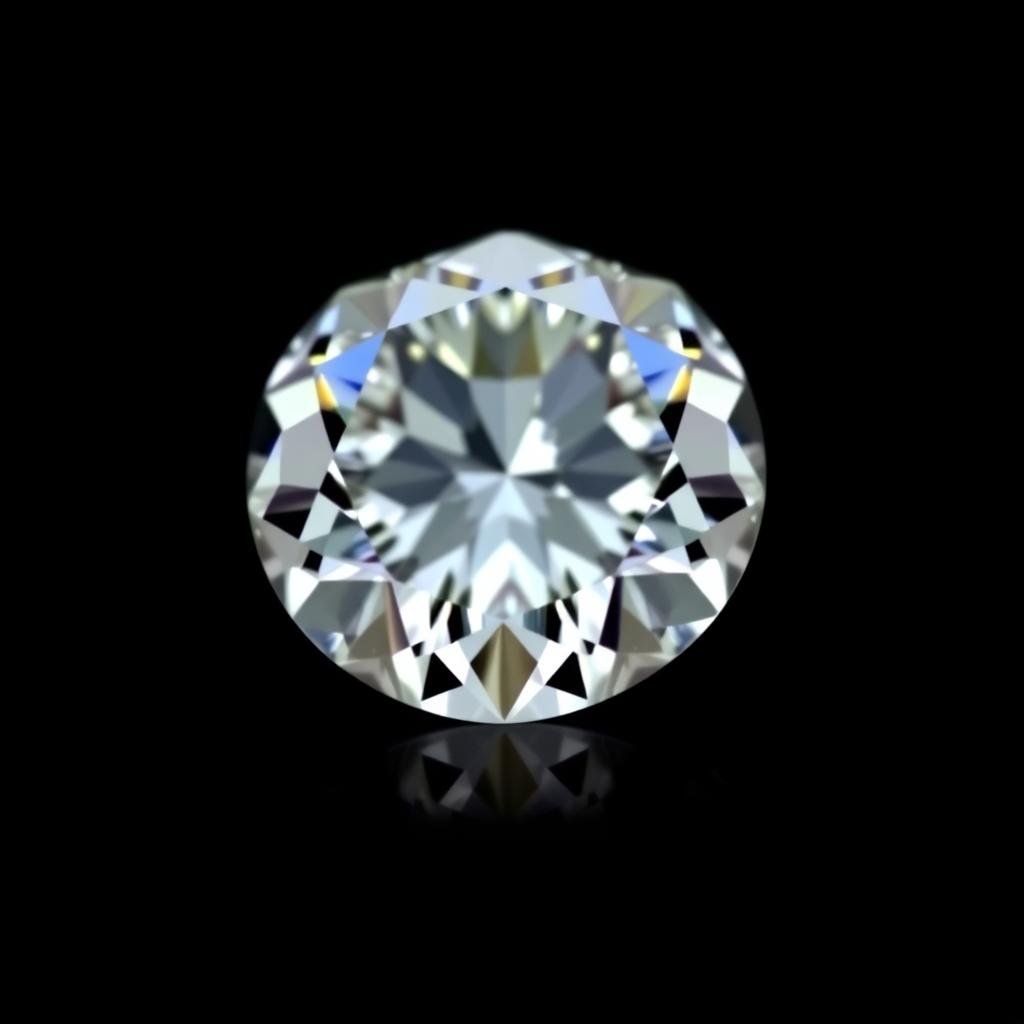
Features a flat bottom and domed top with triangular facets. Creates a subtle glow rather than brilliant sparkle. Popular in Georgian and Victorian eras.
Historical Significance
Each vintage ring is a small piece of history, reflecting the social values, artistic movements, and technological capabilities of its time. Wearing a vintage engagement ring connects you to this rich heritage and the stories of those who wore it before.
Sustainability
In today’s environmentally conscious world, vintage rings offer a sustainable choice. Choosing a vintage ring means no new mining was required, making it an eco-friendly option with minimal environmental impact.
Explore Unique Vintage Designs
Discover the distinctive craftsmanship and character that only vintage engagement rings can offer.
Guide to Buying Vintage Engagement Rings
Purchasing a vintage engagement ring requires different considerations than buying a modern ring. Here’s what you need to know to make an informed decision.
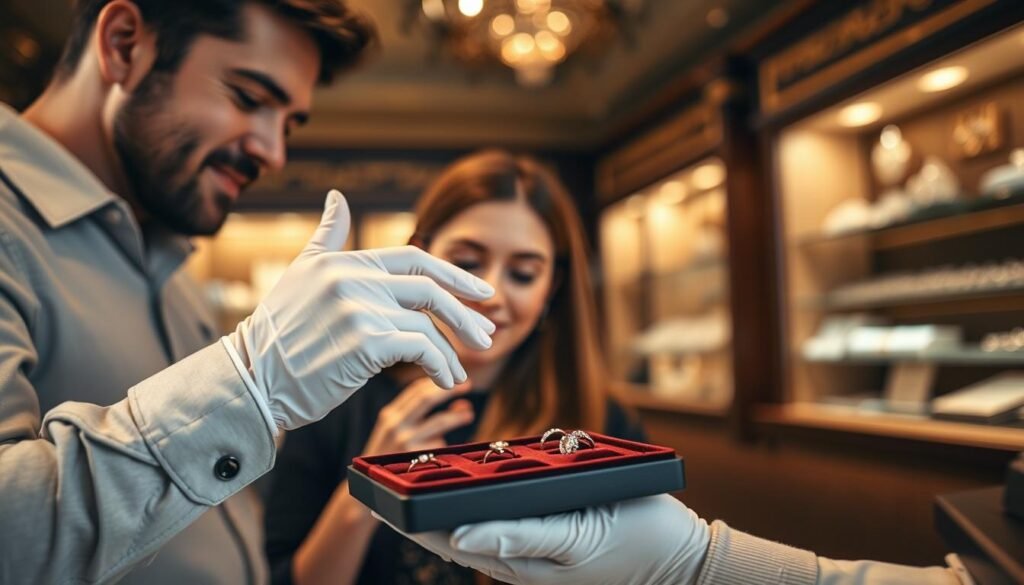
Authenticity Verification
Ensuring your vintage ring is authentic is crucial. Here’s how to verify you’re getting a genuine piece:
- Request documentation: Ask for certificates of authenticity, appraisals, or provenance information.
- Examine hallmarks: Most precious metal jewelry has hallmarks indicating metal content and sometimes maker’s marks.
- Consult an expert: Have the ring evaluated by an independent appraiser who specializes in vintage jewelry.
- Check construction: Examine how stones are set and look for period-appropriate techniques.
- Assess wear patterns: Genuine vintage pieces show appropriate signs of age and wear.
Red Flags to Watch For
- Perfect, unworn condition (too good to be true)
- Machine-made details in supposedly hand-crafted pieces
- Modern diamond cuts in supposedly antique settings
- Inconsistent metal colors or quality
- Unusually low prices for the stated age and materials
Condition Assessment
Unlike modern rings, vintage pieces have lived a life before coming to you. Carefully assess:
- Structural integrity: Check for weak points, especially in prongs and band.
- Stone security: Ensure all stones are secure in their settings.
- Previous repairs: Look for evidence of repairs, which may affect value but aren’t necessarily dealbreakers.
- Band thickness: Very thin bands may need reinforcement for daily wear.
- Restoration needs: Factor in potential restoration costs when considering price.
Where to Shop
Finding reputable sources for vintage engagement rings is essential. Consider these options:
Specialized Vintage Jewelers
Established jewelers who specialize in vintage and antique pieces offer expertise and often provide certificates of authenticity and appraisals.

Estate Sales and Auctions
These can yield unique finds, often at better prices, but require more knowledge to evaluate authenticity and condition.
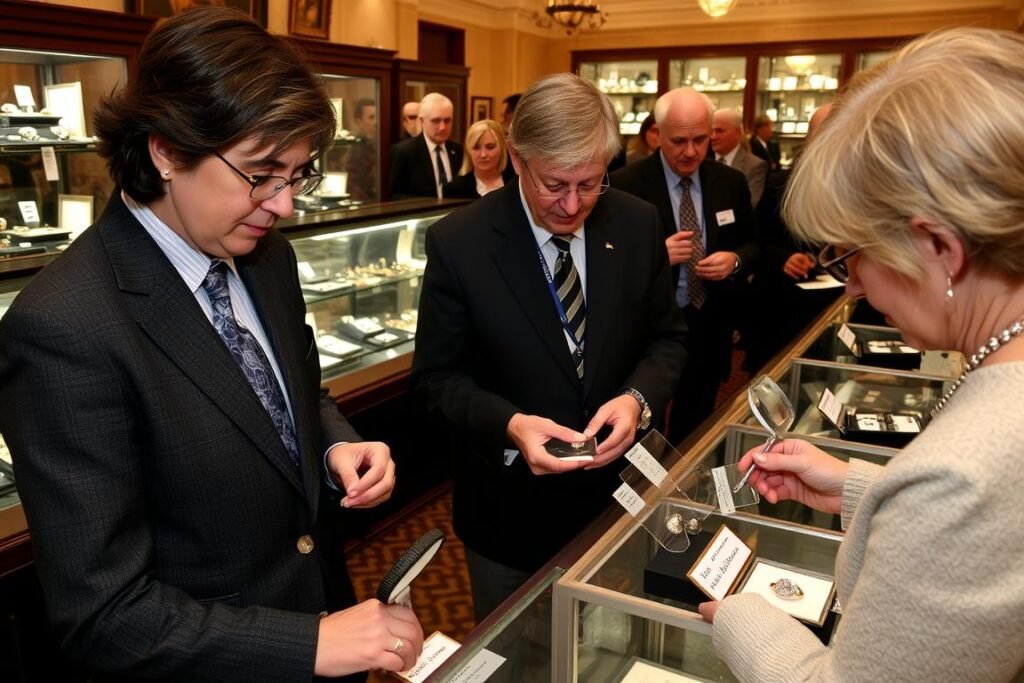
Online Marketplaces
Reputable online sellers offer convenience and selection, but require careful research and clear return policies.
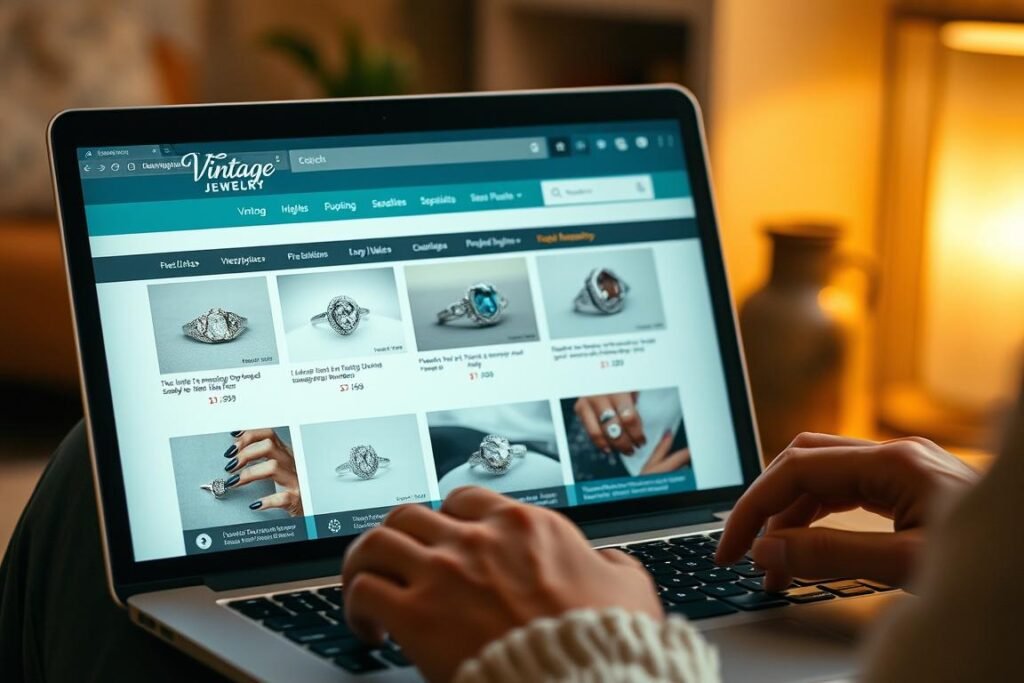
Start Your Vintage Ring Search
Find reputable sellers offering authentic vintage engagement rings with character and history.
Caring for Your Vintage Engagement Ring
Vintage rings require special care to preserve their beauty and integrity for future generations. Follow these guidelines to keep your piece in excellent condition.

Daily Care
- Remove your ring during rough activities, sports, and household cleaning
- Store separately from other jewelry to prevent scratches
- Use a soft cloth to gently wipe the ring after wearing
- Avoid exposure to harsh chemicals, including chlorine and household cleaners
- Remove before applying lotions, perfumes, or cosmetics
Cleaning
- Use mild soap and lukewarm water for basic cleaning
- Clean with a soft toothbrush specifically reserved for jewelry
- Avoid ultrasonic cleaners, which can loosen stones in vintage settings
- Pat dry thoroughly with a soft, lint-free cloth
- Have professional cleaning done annually by a jeweler experienced with vintage pieces
Special Considerations
Certain vintage materials require extra care:
- Pearls and opals: These porous gemstones can be damaged by soaps and chemicals
- Filigree work: Delicate metalwork can catch on fabric and bend
- Old adhesives: Some vintage pieces used glue to secure stones, which can deteriorate with moisture
- Thin bands: May weaken over time and require reinforcement
Professional Maintenance
Regular check-ups with a jeweler experienced in vintage pieces are essential:
- Have prongs and settings checked every 6-12 months
- Discuss any restoration needs with a specialist in period jewelry
- Consider insurance specifically for vintage jewelry
- Keep documentation and photographs updated for insurance purposes
- Consult experts before any major cleaning or restoration
Embracing the Timeless Beauty of Vintage Engagement Rings
Choosing a vintage engagement ring means selecting a piece with character, history, and unparalleled craftsmanship. These rings tell stories through their design elements, reflecting the artistic sensibilities and cultural values of bygone eras. Whether you’re drawn to the romantic flourishes of Victorian rings, the delicate details of Edwardian pieces, or the bold geometry of Art Deco designs, vintage engagement rings offer a unique alternative to contemporary styles.
Beyond their aesthetic appeal, vintage rings represent a sustainable and often more affordable choice that carries special meaning. Each ring has survived decades, sometimes centuries, to find its way to you—a testament to enduring quality and timeless design.

Find Your Perfect Vintage Engagement Ring
Begin your journey to discover a one-of-a-kind vintage ring that tells your unique love story.
Are vintage engagement rings more affordable than new ones?
Not necessarily. While some vintage rings may cost less than comparable new rings, particularly rare pieces or those from desirable eras like Art Deco can command premium prices. The value depends on factors including the ring’s age, condition, materials, craftsmanship, and historical significance. However, vintage rings often offer exceptional craftsmanship and unique designs that would be prohibitively expensive to recreate today.
Can vintage engagement rings be resized?
Most vintage rings can be resized, but the process requires special care and expertise. Factors like the ring’s design, metal type, and the presence of engraving or stones along the band can affect resizing options. Always consult a jeweler experienced with vintage pieces who can evaluate whether resizing is possible without compromising the ring’s integrity or value.
How can I tell if a vintage engagement ring is authentic?
Authenticating vintage rings involves examining several factors: appropriate wear consistent with the claimed age, period-correct craftsmanship techniques, proper materials (including diamond cuts typical of the era), and hallmarks or maker’s marks. Documentation like original receipts, appraisals, or provenance information can also help establish authenticity. When in doubt, consult an independent appraiser who specializes in vintage jewelry.
